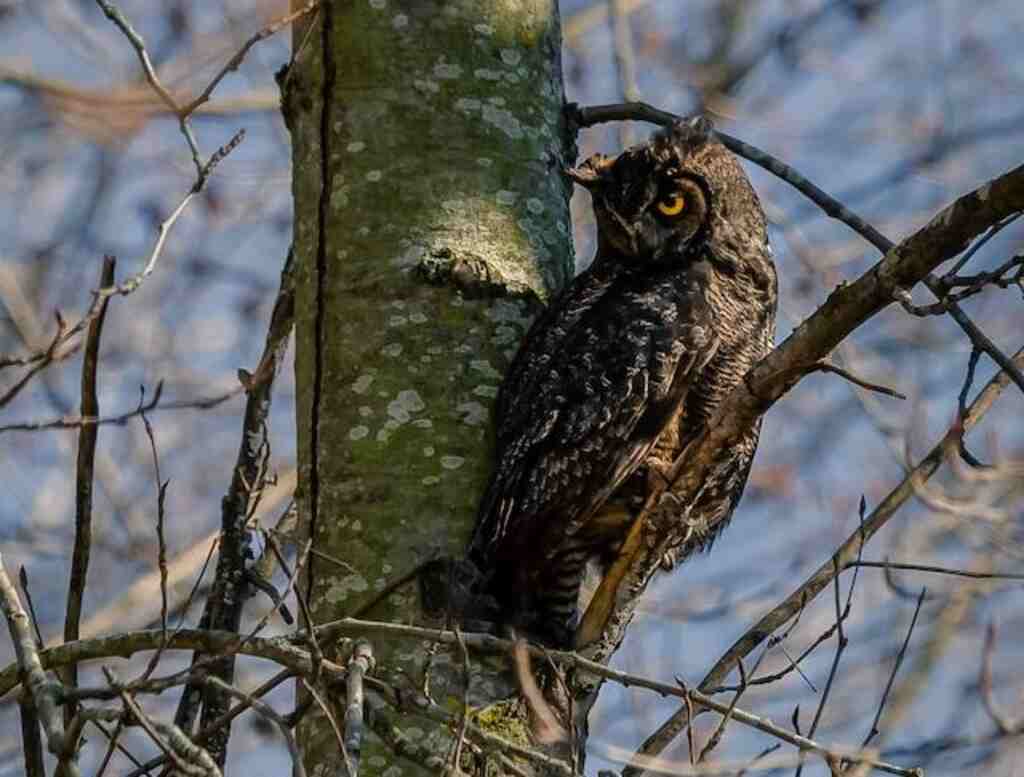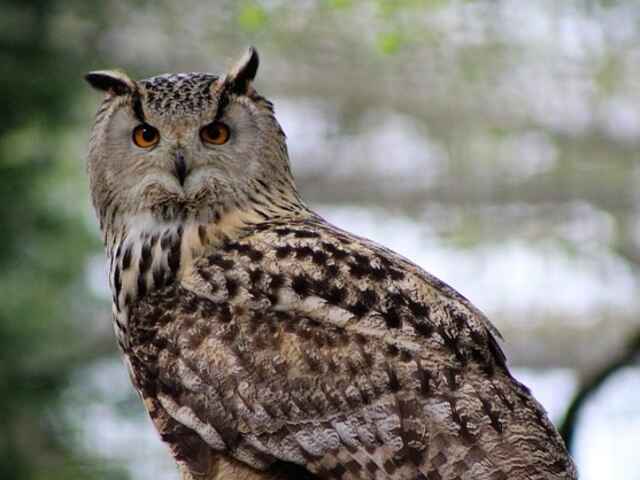Welcome to the wild world of nocturnal predators! If you’ve ever found yourself wondering, “Do owls eat raccoons?” you’re in the right place. The short answer is yes, they do. But, as with most things in life, the answer isn’t quite that simple.
In this article, we’ll dive into the fascinating relationship between owls and raccoons, explore the reasons why owls might choose to eat these masked bandits, and uncover some surprising facts about these feathered hunters.
So, hold onto your hats (or your trash cans), and let’s get started!
Table of Contents
An Introduction to Owls and Raccoons
Owls and raccoons are two of the most fascinating animals found in North America. Owls are known for their nocturnal lifestyle, silent flight, and impressive hunting skills.
There are over 200 species of owls worldwide, but only a handful can be found in North America. On the other hand, raccoons are medium-sized mammals that are famous for their black mask-like marking around their eyes and bushy tails.
They’re widely distributed across North America and can be found living in various habitats such as forests, grasslands, and urban areas. Despite being different animals with unique characteristics, owls and raccoons share one similarity: they’re both predators that can hunt smaller animals for food.
This brings us to the question: Do owls eat raccoons? Before we answer this question, let’s delve into more details about these two creatures.
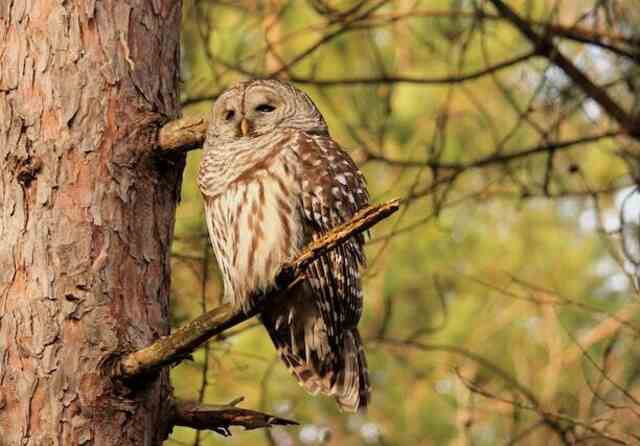
The Question: Do Owls Eat Raccoons?
The idea of an owl eating a raccoon may sound absurd at first, since raccoons are much larger than most of the prey that owls commonly hunt.
However, it’s not uncommon for larger owl species like Great Horned Owls to prey on small mammals like skunks or rabbits.
So it’s possible that an owl could take down a juvenile or weakened raccoon under certain circumstances. But can this claim be substantiated with evidence?
To answer this question requires an understanding of the diet of owls and raccoons separately, along with research on their interactions in the wild.

Owls And Their Diet
Types of owls found in North America
There are 19 different species of owls that can be found in North America, each with its own unique characteristics.
Some of the most common types of owls include the Great Horned Owl, the Barred Owl, and the Eastern Screech-Owl.
These birds of prey can be found in a variety of habitats including forests, deserts, and grasslands.
General diet of owls
Owls are carnivorous birds that primarily feed on small mammals such as mice, voles, and shrews. However, depending on the species and habitat they live in, they may also consume insects, birds, reptiles, fish or amphibians.
Owls are skilled hunters that use a combination of stealth and speed to catch their prey. They have excellent eyesight, which allows them to see in low light conditions.
They also have incredible hearing, which enables them to locate their prey even in complete darkness.
How owls hunt
Owls use a variety of hunting strategies depending on the species and available resources. Some owls hunt from perches waiting for unsuspecting prey, while others fly low over open areas, scanning for movement below them.
Another common hunting method is using their keen sense of hearing to locate sounds made by their prey.
Once an owl has identified its next meal, it swoops down silently from above, picking up its victim with sharp talons before flying back up to a perch or back into the air to find another target.
Owls often swallow their prey whole or tear off pieces with their sharp beaks before consuming them.
Overall, owls are highly adaptive predators that have developed efficient methods for securing food regardless of where they live or what is available to eat.
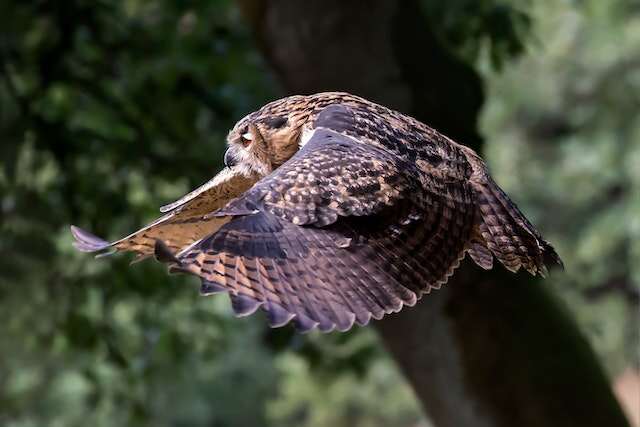
Raccoons And Their Diet
General Information about Raccoons
Raccoons are omnivorous mammals that belong to the Procyonidae family. They are usually found in North America, but they can also be found in other parts of the world. These animals are known for their nocturnal habits, although they may also be seen during the day.
Raccoons possess a unique physical appearance, marked by a dark mask encircling their eyes and a furry tail adorned with light and dark stripes in alternating patterns.
What do raccoons eat?
The diet of raccoons is varied, as they are opportunistic feeders. They can eat almost any food that is available to them in their habitat. Generally, raccoons prefer foods that are high in protein and carbohydrates.
This includes insects, small mammals, birds’ eggs, fruits, vegetables, nuts, and seeds. Raccoons have a highly adaptable digestive system that allows them to digest almost any food source available to them.
They use their sharp teeth and strong jaws to crack open nuts and seeds, while also having the ability to catch small prey like fish or rodents. During winter months, when food is scarce for raccoons, they will turn towards human sources of food such as garbage cans or compost piles in order to survive.
Interestingly enough, certain studies have shown that urban dwelling raccoons tend on average to be larger than those living outside urban areas due to higher availability of nutrient-dense human foods.
Raccoon populations tend to fluctuate based on environmental factors such as climate change which can affect natural sources of food like fruit trees or berry bushes, which can lead raccoons into areas with greater access to human sources of food.
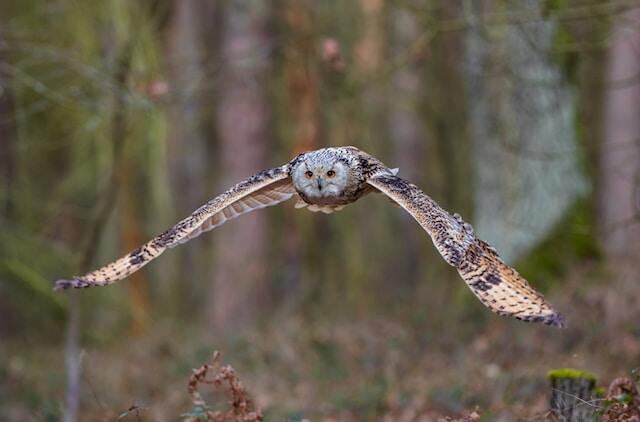
Do Owls Eat Raccoons?
Research on Owl Diets
Owls are known to be opportunistic predators, meaning they will consume any prey that is available to them. The diet of an owl varies depending on the species, size, habitat, and location.
However, rodents and small mammals make up a significant portion of an owl’s diet. This includes mice, voles, shrews, and rabbits.
Additionally, some larger owl species also prey on squirrels and other birds. To determine the prey items in an owl’s diet, researchers often use pellet analysis.
Owls regurgitate pellets made up of indigestible parts of their prey, such as bones and fur. By analyzing these pellets, researchers can identify the specific species of prey an owl has consumed.
Evidence of Owl Predation on Raccoons
While raccoons are not a primary food source for owls due to their large size compared to other small mammals in their usual diets, like mice or rats; there have been documented cases where owls have successfully hunted adult raccoons.
In one study conducted in 2018 by researchers at Clemson University in South Carolina found that barred owls were responsible for killing 7% of radio-tracked raccoons in urban areas. Another report from Florida documented a great horned owl preying upon a juvenile raccoon.
However, it is important to note that instances of larger carnivore predation like this are very rare because it takes a considerable amount of energy for an owl to take down such large prey items as compared with smaller rodents or birds.
Factors That Influence Whether An Owl Will Prey On A Raccoon
There are several factors that influence whether an owl will target a raccoon as its next meal or not:
1) Size: As already mentioned, raccoons are significantly larger than most of the typical prey items for owls. Hence, the size and strength of an owl play a significant role in determining if it will be able to take down a raccoon or not.
2) Location: The likelihood of owls preying on raccoons also depends on the location where they are found. Urban areas with a higher concentration of raccoons may see more instances of predation by owls.
3) Time: Owls are mostly nocturnal predators who hunt at night; whereas, Raccoons are primarily active during dusk and dawn (crepuscular activity). So there is little overlap between their hunting times, which reduces the chances of them encountering each other.
4) Availability of other prey items: If there is an abundance of smaller prey items like rodents or rabbits available to an owl, it may not feel compelled to hunt larger animals like raccoons.
5) Hunger: Finally, hunger plays an important role in determining whether an owl will go after a large prey item as compared to smaller ones. If the owl has gone without food for a long time and no smaller prey items are available in its range, it might try its luck with hunting larger animals such as raccoons.
Interesting Facts About The Relationship Between Owls And Raccoons
The relationship between owls and raccoons have many interesting facets that are worth exploring:
1) Both species occupy similar habitats such as hollow trees and cavities; hence they often encounter each other.
2) Raccoon mothers may move their young away from nesting sites inhabited by large predatory birds like owls to prevent their offspring from being harmed.
3) Some researchers suggest that predation by large birds such as owls may help regulate the population size of raccoons in certain areas.
4) In some Native American cultures, owls are believed to be protectors and guides to the afterlife. Raccoons, on the other hand, symbolize curiosity and determination.
5) Owls play a critical role in controlling rodent populations, which can cause damage to crops and property. In this way, they indirectly contribute to human well-being, while raccoons are notorious for raiding garbage cans in search of food.
Similarities Between Owls And Raccoons As Nocturnal Predators
Owls and raccoons are two very different animals that share some surprising similarities. One of these similarities is their hunting habits. Both owls and raccoons are nocturnal predators that hunt for food in the dark.
This means that they have adapted to have excellent night vision, hearing, and stealth, which makes them highly skilled hunters. Despite being predators, both owls and raccoons are also preyed upon by other animals.
In fact, both animals fall victim to many of the same predators in their ecosystems such as coyotes, bobcats, foxes, and even domestic dogs and cats.
This means that both owls and raccoons must constantly be on guard against potential threats from above or below.
Another interesting fact about the relationship between owls and raccoons is that they often compete for the same resources in their habitats.
Both animals rely on similar prey items like rodents, small mammals, birds, reptiles, amphibians, insects and fish which can sometimes lead to a depletion of resources for one animal or another.
Examples of other animals that are preyed upon by both owls and raccoons
There are several other species of animals that are victims of predation from both owls and raccoons, aside from rodents like mice or rats.
One example is rabbits; while they may seem too large for an owl to take down, it can happen, especially with larger species such as Snowy or Great Horned Owls.
Raccoons on the other hand will hunt smaller rabbits such as young kits which make up a significant portion of their diet, especially during spring when baby bunnies abound.
Another example is fish; many species of owl including Barred Owls live near water bodies where they can catch fish at night while raccoon will wade in shallow water looking for crayfish, frogs and fish.
Snakes are another common prey item for both owls and raccoons. Owls have been known to capture and eat snakes up to several feet long, while Raccoons have been known to feed on smaller species like garter snakes.
The impact of owl predation on the raccoon population
Owl predation has a significant impact on the raccoon population, especially in areas where owls are abundant. In fact, studies have shown that in some areas, up to 30% of a raccoon population can be lost due to owl predation!
However, this does not necessarily mean that owl predation is a bad thing for the raccoon population as a whole. In fact, research has shown that when there is a high level of owl predation on raccoons, it can actually lead to lower rates of disease transmission within the remaining raccoon population.
This is because sick or weakened animals are often easier targets for predators such as owls.
Furthermore, since both owls and raccoons compete for similar prey items (as mentioned earlier), having a healthy owl population can also benefit the health and abundance of other species in their ecosystems by helping balance food resources.
Overall, while owl predation does impact the raccoon population, it is important not to view this relationship as entirely negative; instead we should see it as an important aspect of natural selection within an ecosystem where all living beings including predators play their roles.

Conclusion
Summary of Findings
The answer to the question “Do owls eat raccoons?” is a resounding yes. Several species of owls have been observed preying on raccoons in the wild, including great horned owls and barred owls.
These birds of prey are apex predators and are capable of taking down prey much larger than themselves. The diet of an owl is heavily influenced by its geographic location and available prey.
In areas where raccoons are abundant, they may become a regular part of an owl’s diet. However, other factors such as habitat loss and human activity can impact the availability of both owl and raccoon populations.
Final Thoughts
While it may seem surprising that an owl could take down a large mammal like a raccoon, it is important to remember that these birds are skilled hunters with powerful talons and sharp beaks.
Owls play an important role in maintaining ecosystem balance by controlling populations of smaller animals like rodents and insects.
Although predation by owls can have some impact on the raccoon population, it is not significant enough to cause major fluctuations in their numbers.
Additionally, as long as their habitat remains intact and human activity does not disrupt their natural behaviors, both species can coexist peacefully.
Overall, studying the relationship between owls and raccoons highlights the complex interconnections between different species in our ecosystems.
It encourages us to consider how our actions impact wildlife populations and how we can work towards creating more sustainable environments for all creatures, great and small.
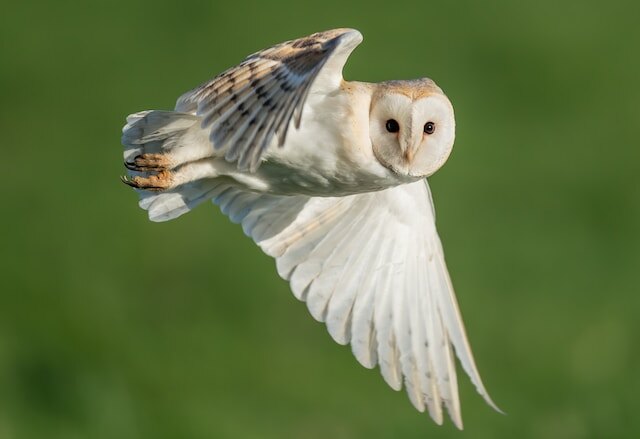
FAQs: Do Owls Eat Raccoons?
What kind of owls eat raccoons?
Great Horned Owls are the most common owl species known to prey on raccoons. However, Barred Owls, Barn Owls, and Eastern Screech-Owls are also known to eat them.
Do owls only eat baby raccoons?
No, owls are known to prey on both adult and baby raccoons, depending on their size and hunting ability.
How do owls catch and kill raccoons?
Owls usually catch raccoons by swooping down from a tree or a high perch and using their talons to grab them. They will then use their sharp beaks to kill their prey by delivering a fatal bite to the head or neck.
Do owls eat raccoons whole?
Yes, owls usually swallow their prey whole, including the bones, fur, and other parts that are not digestible. They later regurgitate a pellet containing the indigestible parts.
Are raccoons a primary food source for owls?
No, raccoons are not a primary food source for most owl species. Owls mainly feed on small mammals like rodents and rabbits, as well as birds, fish, and insects. However, they will eat raccoons if they are available and the opportunity arises.

